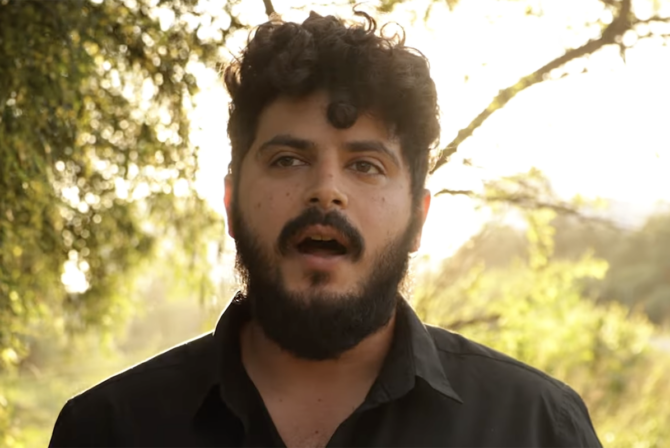You’ve probably heard the expression, “Two Jews, three opinions.” Recently, Sharon Clark wrote for Kveller about nine things she wants the world to know about her daughter, Sarah, a 4-year-old who uses American Sign Language and identifies as culturally Deaf. Sharon very astutely pointed out that no two children or families are alike, and she is right.
As an Auditory Verbal Therapist, I work with families of children with hearing loss who have chosen listening and spoken language, teaching parents to become their children’s first and best teachers. Auditory Verbal Therapists work with parents of children with hearing loss, guiding and coaching them to use everyday experiences to grow their children’s listening and speaking skills through play. While Sharon’s experience with Sarah is true for her family, it does not ring true for the hundreds of families I’ve had the privilege to serve. So here are nine more things I (and they) want you to know about hearing loss in the 21st century.
READ: What I’ve Learned from Raising a Daughter Who Wears an Eye Patch
1. We hear with our brains, not with our ears. Yes, you read that correctly. Sound enters through our ears, but it is processed and understood by the brain. Children with hearing loss have the same listening potential as children born with typical hearing. If they are given access to sound via technology and lots of spoken language exposure, their brains can learn to listen, too!
2. Hearing loss can be detected at birth. Newborn hearing screening is now routine in almost all US states, Canada, and Israel. Thanks to newborn hearing screening, it is possible to determine whether or not a child needs further hearing testing. But newborn hearing screening is not foolproof. Most children with hearing loss are born into families with no history of deafness, and any parent can have a child who is deaf or hard of hearing. Learning that your child is deaf can feel like being dropped into a game you’ve never played before and being told you have to be the MVP. Take heart! Other parents have walked this road before you, and there are a multitude of resources out there to help you create a beautiful future for your child (I recommend checking out the Alexander Graham Bell Association and Hearing First. If you have concerns about your child’s speech and language development, seek help! Early intervention is crucial to achieving the best outcomes.
3. Children who are deaf or hard of hearing can learn to listen and talk, and the vast majority of parents are choosing this communication method. There are many ways for people with hearing loss to communicate. Some use sign language, others use cued speech or total communication. Recent data show that over 85% of parents of children with hearing loss choose a listening and spoken language communication outcome . Many parents choosing auditory verbal therapy do so in order to enable their children to communicate with society at large and participate independently in school and, eventually, the workforce.
READ: WATCH: Girl Receives 3-D Printed Prosthetic Arm & Her Reaction is Incredible
4. Hearing technology—like cochlear implants, hearing aids, and bone conduction devices—allows children with hearing loss to hear speech, talk on the phone, enjoy music, and more. Children who learn to communicate using the auditory verbal approach rely on listening, rather than lip-reading. As a result, they are able to communicate without seeing the speaker’s lips or face. Hearing devices help children hear not only speech and environmental sounds, but also to differentiate between pitches of music.
5. Parents who choose listening and spoken language and hearing technology for their children are not doing it to “fix” them. Many parents choose to give their children with hearing loss access to sound so that they can be fully included in the culture of their home and family. Rather than being a selfish decision or a quick fix, this choice requires dedication and commitment of time and resources. All parents have the right to choose the communication mode that works best for the unique circumstances of their child and their family without judgment.
6. Children who are deaf or hard of hearing can learn to speak multiple oral languages. Many Jewish children with hearing loss can speak English, learn to chant Torah in Hebrew, study Gemara in the original Aramaic, take Mandarin classes at school, and more!
7. Even though some Jews do not operate electrical devices on Shabbat, hearing technology is perfectly fine to use. Jewish law recognizes the importance of hearing technology as a means to connect people who are deaf or hard of hearing to their world. Just as prohibitions against using electronic devices take a backseat to the use of lifesaving technology, we also recognize the importance of being able to hear and communicate. Ask your local rabbi for details.
READ: Special Needs Didn’t Stop My Son from Having a Perfect Bar Mitzvah
9. Children with hearing loss can attend mainstream schools (and Jewish Day Schools, and Hebrew Schools!) along with their hearing peers. Thanks to early intervention, hearing technology, and listening and spoken language intervention, 75% (Shirin, 2013) of children who are deaf or hard of hearing attend classes with their hearing peers, requiring little or no accommodation.
10. Children who are deaf or hard of hearing can be full, valued members of the Jewish community. This is one point on which we can all agree. Whether they identify as deaf, Deaf, hard of hearing, hearing impaired; use cochlear implants, hearing aids, or none of the above; whether they communicate via speech, cues, or signs, children with hearing loss deserve to be fully included in Jewish life. After all, we are all b’tzelem Elohim: made in the image of the Divine.








